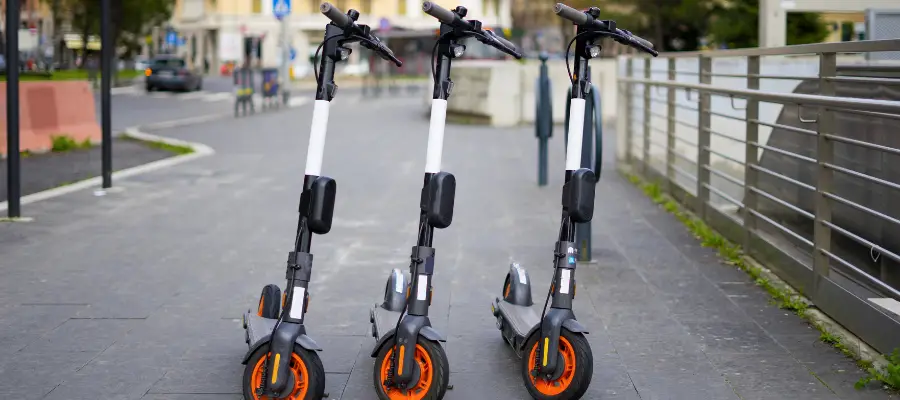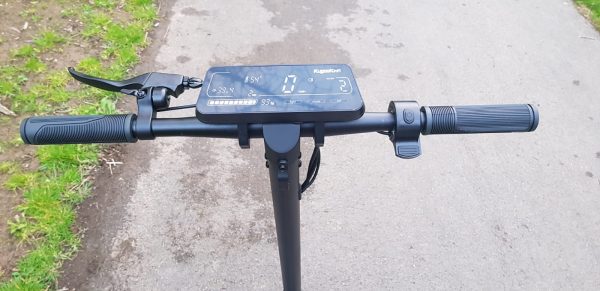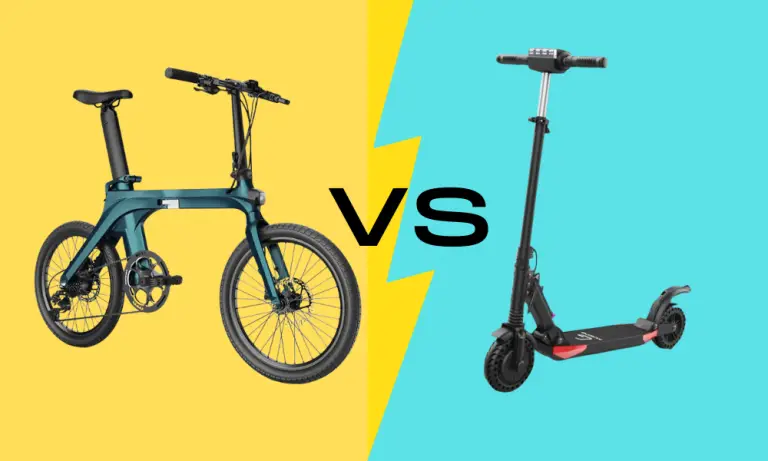When you purchase through links on our website, we may earn a commission. Affiliate disclosure.
With e-scooter legislation looking more and more likely (in the UK), their popularity is only going to increase. In this comprehensive electric scooter buyer’s guide, I’ll explain what to look for (and what to avoid). Plus, I will decode some of the jargon and go into a bit more detail on things like motor power and battery range.
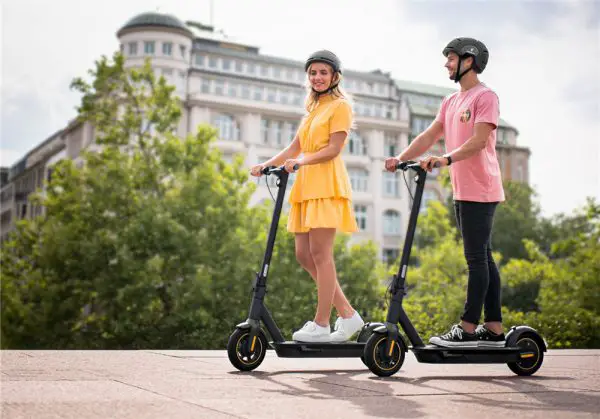
What are the benefits of an electric scooter?
If you’re looking for a cheap and fun way to get around town quickly, but don’t want to use your own energy (walk or ride a bike), then e-scooters are the perfect solution. But what are the benefits of an electric scooter and is it worth buying one?
- Cheap to buy: For around £500 / €500 you can buy a pretty good electric scooter – it will have enough battery range for 20-30km and should have enough power to effortlessly transport an adult across town without fuss.
- Easy on the pocket: When you compare the cost of charging an electric scooter with the cost of running a car in 2022, then it’s a no-brainer! Also, an e-scooter will be cheaper than using public transport.
- Can be taken inside: Most electric scooters can be easily folded down and taken inside without taking up too much space.
- Beat the traffic: Making a small journey by car in a large town or city can take a long time. With an e-scooter, you can easily filter through any traffic hold-ups.
- Fun: Anyone who’s ever ridden an electric scooter will tell you they’re great fun to ride – it certainly beats being stuck in a car or crammed onto a bus!

Common Electric Scooter FAQs
Below, I’ve tried to answer a few of the more common FAQs when it comes to e-scooters. If you’re new to the world of electric scooters, it can be a bit overwhelming learning about all the technical features. At the end of the day, even cheaper e-scooters can cost a fair bit and you want to be sure you’re making the right purchase for your needs.
Are electric scooters legal?
The answer to this question depends on where you live. In the US and most European countries, e-scooter use is allowed providing the scooter meets certain criteria (speed/power limits). In the UK, things are somewhat different and currently, e-scooter use is not allowed under the road traffic act.

Things will hopefully be changing very soon as the Government recently announced (May 2022) plans to introduce legislation covering the use of personal electric vehicles like e-scooters. I will update this article as soon as there are any further developments.
In the meantime, if you are in the UK and use an electric scooter, it seems there’s a bit of a ‘postcode lottery’ – some areas seem to have a liberal approach to their use (as long as used responsibly) and other areas do not tolerate e-scooter use. Do your research and if you decide to use one before the law allows it, ride responsibly and always wear a helmet.
How does an electric scooter work?
There are two main components to an electric scooter – the motor and the battery. The range (time/distance travelled on a single charge) is determined by the amount of power the motor produces and the energy capacity of the battery. Below I explain power output and battery capacity.
Motor
Most electric scooters use a brushless motor either in the front or rear wheel. Power output is measured in watts (w) – 750w equals one horsepower. Most of the e-scooters that are currently available produce in the region of 250w – 1000w.
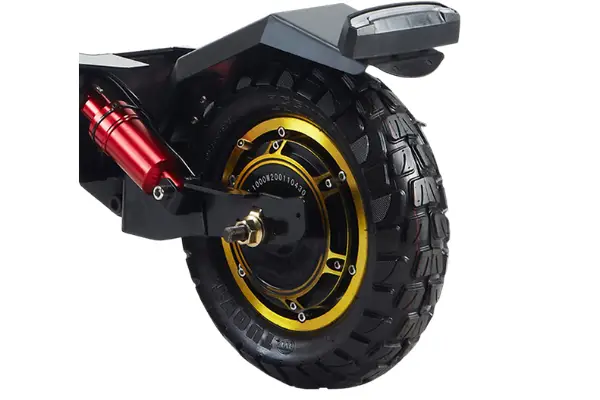
The power output is determined by the voltage (v) and current (A). A 36v motor with a 15A controller will produce 540W peak power (36v x 15A).
Power output will determine things like acceleration and top speed, but this will be greatly affected by rider weight. Unlike e-bikes where the rider has to add their own pedalling power to help the motor, an e-scooter motor won’t have any additional help. This means a 100kg rider on a 250w scooter, won’t be travelling on anything but flat ground (no hills or inclines). On the other hand, a 60kg rider will be just fine with a 250w motor.
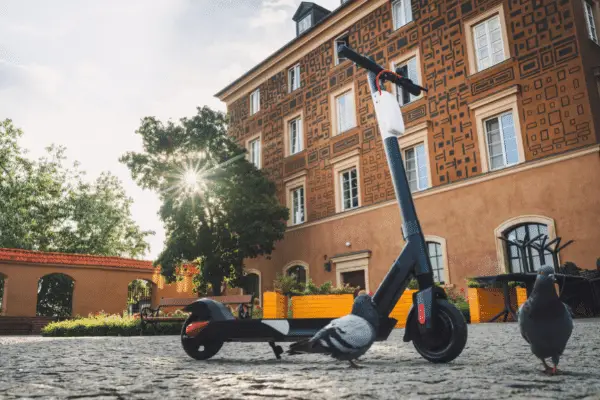
I weigh just over 100kg and I’ve tested several 350w e-scooter and they usually slow to a snail’s pace on even the slightest incline. My teenage daughter can ride the same e-scooter effortlessly up an 8% gradient. The best electric scooters for heavier riders should have a power output of at least 500w continuous. Obviously, when the law comes out, this may be the upper power limit with a 15mph max speed.
Battery
The system voltage will usually be either 36v or 48v. Some high-performance e-scooters will go as high as 72v, but we will concentrate on the two most commonly used voltages.
Nearly all modern e-scooters use Li-ion (Lithium-Ion) batteries – these are typically 18650 cells arranged in series to generate the required voltage and energy capacity.
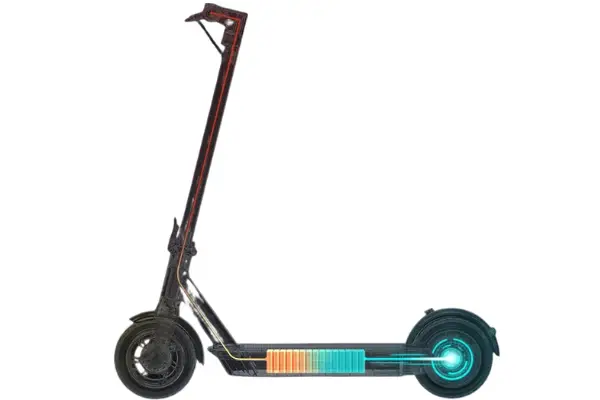
Back in the early days sealed lead acid batteries were used and then NiCad (Nickel Cadmium) batteries. Li-ion batteries are lighter and can store more energy than older batteries, they also have greater longevity.
Most quality manufacturers will use high-quality branded cells from household names like LG, Samsung and Panasonic. A lot of the cheaper e-scooter brands tend to use unbranded cells. If you buy a cheaper electric scooter that uses unbranded cells, you may not get the same lifespan from the battery (compared with a well-known battery brand).
Battery capacity is measured in watt hours (Wh) this figure is calculated by multiplying the Voltage by the Amp Hours (Ah). For example, a 36v 12.5Ah battery will have a total energy capacity of 450Wh – a motor drawing 450 watts continuously will discharge the battery in one hour.

It’s very difficult to determine battery range as there are so many variables to consider. The biggest variables will be rider weight, terrain (flat or hilly) and motor power output. Other variables will include air temperature, wind direction/strength, tyre pressures etc.
Because an e-scooter relies solely on the motor for propulsion, a typical scooter battery will deplete far quicker than an equivalent e-bike battery.
Which is the best – front or rear motor?
You will notice that some e-scooters have front motors and others have rear motors (some high-performance e-scooters have a motor on both wheels). Below, I’ll go into the pros and cons of each.
Front motor pros:
- Better traction – more suited to slippery surfaces
- Less prone to oversteer
- Lighter in weight
Front motor cons:
- Wheels spin – front motors may spin in wet conditions as a lot of the rider’s weight is concentrated in the middle to rear of the scooter.
- Prone to understeer
- Difficult to turn at higher speeds
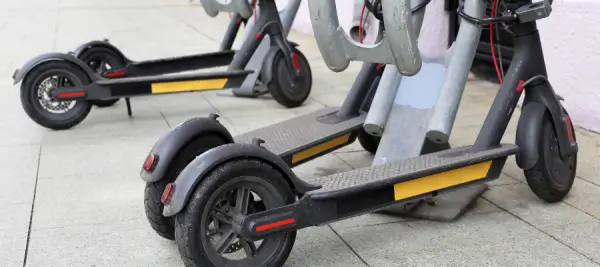
Rear motor pros:
- More powerful – rear motors tend to be more powerful than front motors, making them better for accelerating and climbing hills.
- Better turning circle – rear motors can make the scooter more nimble.
Rear motor cons:
- Prone to oversteer – rear motors can make the e-scooter prone to oversteer, especially in icy or wet conditions.
What kind of brakes does an electric scooter have?
Most e-scooters have a combination of mechanical disc brakes and electronic braking systems. The electronic brake works through the motor whether on the front or rear wheel. The non-drive wheel will usually have a mechanical or in some cases hydraulic disc brake.
The electronic brake works by creating resistance to motor rotation – this helps bring the e-scooter to a slow and controlled stop. Some scooters will have a regenerative braking system which puts some of the braking energy back into the battery.
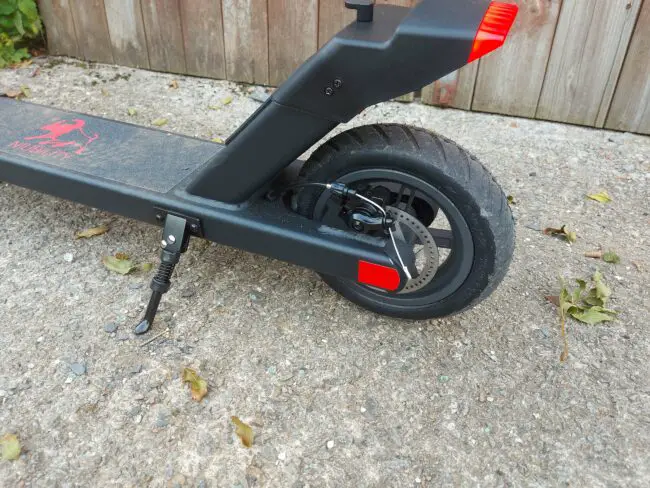
You definitely want a disc brake on at least one of the wheels, but I would recommend dual disc brakes if possible. Electronic braking does help with slowing the scooter down but I wouldn’t want to rely on it in an emergency situation. And as far as regenerative braking is concerned, the amount of energy recovered is going to be so small, it’s not going to make much of a difference to range.
Is it worth having regenerative braking on an electric scooter?
As I’ve explained above, the kind of regenerative braking systems found on e-scooters are going to be putting such a small amount of energy back into the battery, it’s not going to be noticeable to the average rider. Some electric scooter regenerative systems also put a small amount of energy back when you lift off the throttle, but again this is going to be so small it’s not going to be really noticeable.
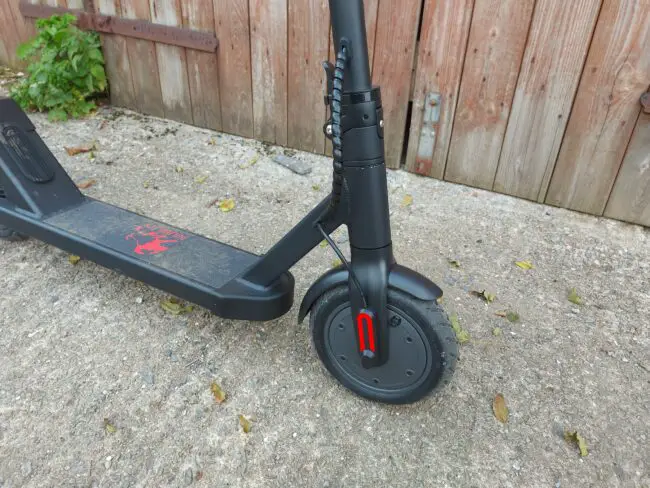
My personal take on this is it’s a bit of a marketing ploy. It sounds cool and maybe in future, the technology will be refined so it makes a noticeable difference to battery range. But, for now, I wouldn’t base my decision on whether an e-scooter has this function or not.
What kind of display is best?
Electric scooters will usually have an LCD or LED display. The main function of this is to provide the rider with information regarding speed, battery range, temperature and distance travelled. Most e-scooters will have several power or speed modes – this enables the rider to be more frugal with their energy consumption and prolong the battery range.
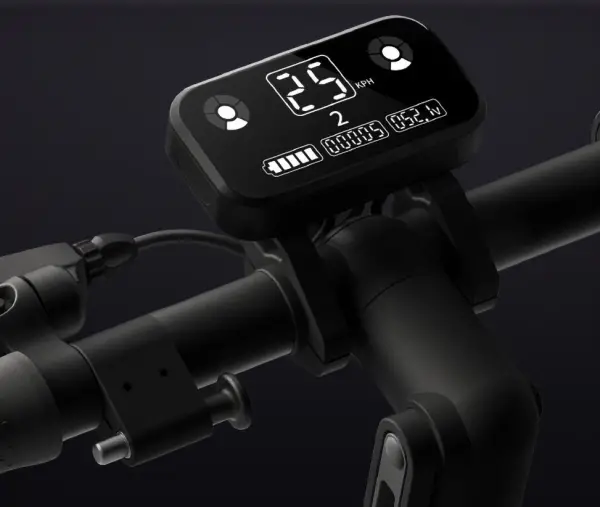
Most basic e-scooter displays are controlled with a small keypad near the left or right handlebar grip. A lot of e-scooters also allow the rider to pair a smartphone app with the scooter for enhanced data (like GPS navigation or motor and battery health data).
Is a thumb or twist throttle better?
This is usually either a thumb throttle or a traditional twist throttle. These are nearly always located on the right-hand side of the handlebar.
With regards to which is better, I think it’s a matter of personal preference. I personally prefer a thumb throttle, but I know a lot of riders who like twist throttles. I don’t feel that one is necessarily better than the other.
What accessories do electric scooters usually have?
Most electric scooters have a small kickstand, mudguards and lights. Even budget e-scooters will have a rear brake light. It’s likely that in the future indicators may also be required by law.
What are the best tyres for an electric scooter?
Some electric scooters have solid ‘honeycomb’ tyres – the main benefit of these is there is no risk of puncture, but they do not absorb road imperfections very well and don’t provide the most comfortable of rides. Traditional pneumatic tyres with inner tubes are far more common – these tyres usually have a bit of puncture protection, but I would advise maybe filling the tubes with a sealant or carrying some tools and a spare inner tube just in case.
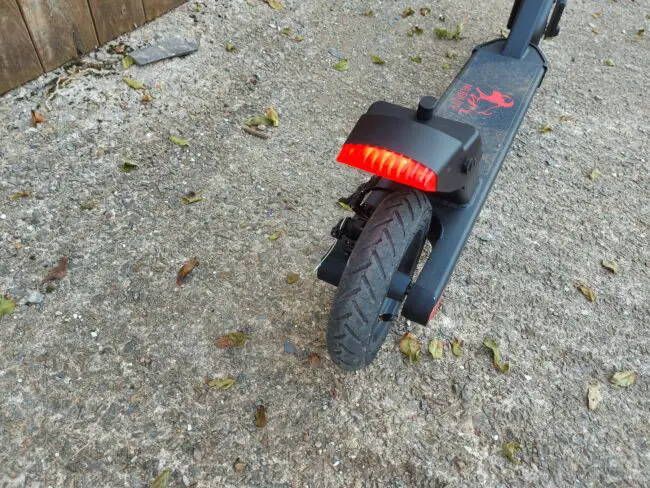
Are electric scooters waterproof?
Most high-quality electric scooters are definitely going to be weatherproof, but there’s a big difference between being water-resistant and waterproof.
If you live in a country that gets a lot of rain, then it’s inevitable you’ll be riding through standing water. Most decent e-scooters should be capable of being ridden through puddles and in rain but always check with the manufacturer first. Budget e-scooters will often have a disclaimer stating ‘do not get wet’. Some more expensive brands will guarantee a degree of water protection.
If you don’t know this, either way, I would err on the side of caution and avoid the wet if possible.
Should I wear a helmet when riding an electric scooter?
Yes, you should always wear suitable head protection. You only have to take a slow speed tumble to end up in hospital and anything to can do to mitigate the risk of serious, life-changing injuries should be done. Make sure you get something like a cycling helmet that’s been rigorously tested for safety.
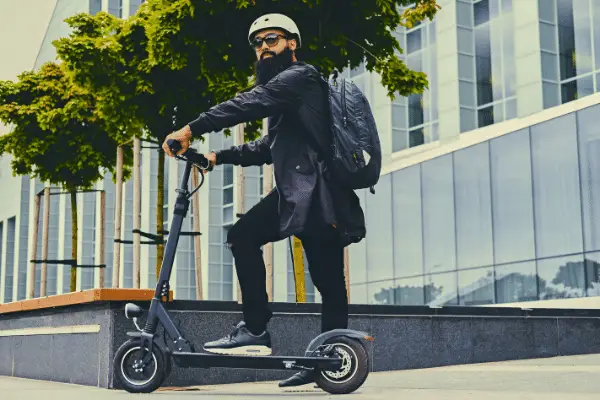
Are electric scooters better than e-bikes?
No, they are different forms of transport, with their own pros and cons. Both use electric motors and lithium batteries, but that’s where the similarities end. Electric bikes are bigger, heavier and need to be physically pedalled. Whereas, an e-scooter is propelled solely by the motor. E-Bikes are generally much more expensive, but you can buy a practical e-scooter for under £500. E-Bikes can still be used when the battery is flat, but with e-scooters, you’ll be pushing or carrying it home. For more information on what I think, check out my electric bikes vs electric scooters article.
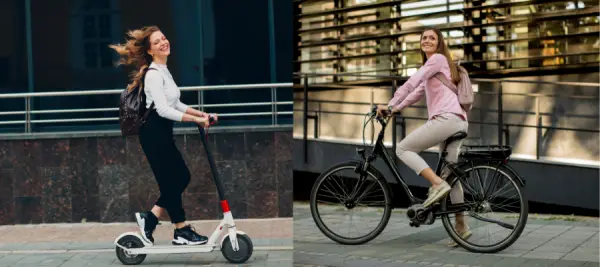
Conclusion
I hope you’ve found this electric scooter buyer’s guide useful and that it’s answered some of your questions regarding this great form of personal transport.
Electric scooters are definitely here to stay and they are going to play a big part in transporting people from A to B, particularly in urban environments. I would imagine in some areas, they’ll become as popular as bikes and e-bikes.
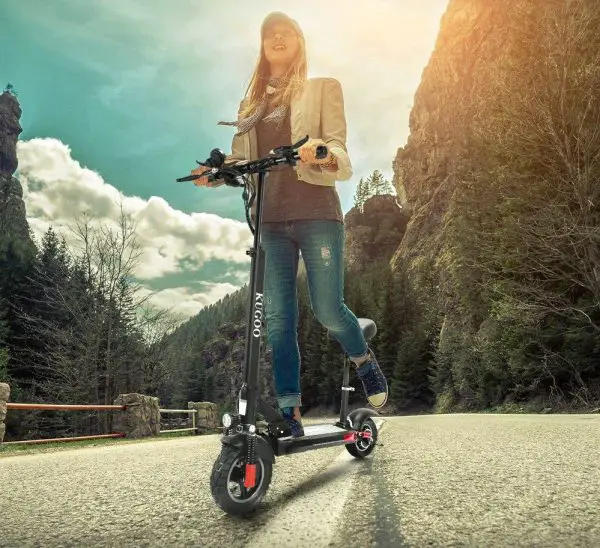
As soon as the law gets changed in the UK, I’ll post an update here. But, for the time being, if you are in the UK, only ride in areas that are e-scooter friendly and always ride safely with consideration for others.
I have a few separate buying guides featuring the best electric scooters for commuting and the best electric scooters under £300. I’ll be publishing more e-scooter-related articles in the near future.
On my other website, I’ve compiled a list of over 100 electric scooters currently available in the UK and EU.

